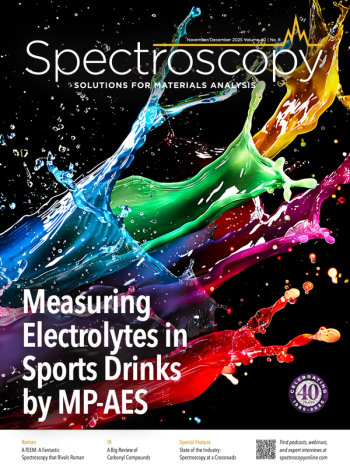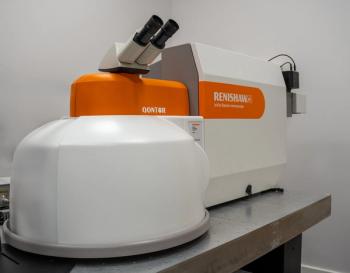Key Points:
· Prashant Jain’s team developed an advanced nanoscale surface-enhanced Raman spectroscopy (SERS) technique that allows real-time monitoring of catalyst surface intermediates during CO₂ photoreduction on silver nanoparticles. This approach revealed detailed information on reaction intermediates, including rare multi-carbon products like butanol, highlighting complex C–C coupling mechanisms that are critical for designing more efficient catalysts.
· Traditional bulk-phase analysis often misses fleeting, surface-bound intermediates essential for understanding catalytic mechanisms. Jain’s approach uses single-nanostructure SERS, achieving both nanoscale spatial and sub-second temporal resolution, thus enabling detection of transient intermediates that are crucial for modeling and designing better catalysts for CO₂ reduction.
· By identifying key surface species and reaction pathways during CO₂ photoreduction, the study offers insights that can guide rational catalyst design, moving beyond trial-and-error approaches. This work could accelerate the development of photocatalysts that convert CO₂ and water into valuable fuels like butanol under solar light, contributing to sustainable energy solutions.
In a paper published in Nature Communications (1), Prashant Jain and a team of researchers from the University of Illinois Urbana-Champaign (Urbana, Illinois) demonstrate how in situ nanoscale surface-enhanced Raman scattering (SERS) can reveal detailed surface chemistry during CO₂ reduction on silver (Ag) nanoparticles under photocatalytic conditions. The technique’s high spatial and temporal resolution enables detection of a wide range of C₁–C₄ intermediates and products, including multi-carbon compounds like butanol, indicating efficient C–C coupling. Isotope labeling confirms that these species originate from the photocatalytic reaction, not contamination. The research highlights that catalyst surface species under real conditions can differ significantly from expected products, offering crucial insights for improving catalyst design, modeling, and mechanistic understanding of complex reactions like CO₂ photoreduction.
Jain will receive the 2025 Clara Craver Award from the Coblentz Society, presented annually to an outstanding young molecular spectroscopist whose efforts are in applied analytical vibrational spectroscopy. The award will be presented at SciX 2025, taking place from October 5 to 10 at the Northern Kentucky Convention Center in Covington, Kentucky. Spectroscopy spoke to Jain about this study as part of our continuing interview series with SciX award winners.
What makes CO₂ reduction (CO₂RR) such a complex reaction to study at the molecular level?
CO2 reduction is a multi-step reaction with many potential reaction pathways that go through different intermediates and lead to a variety of products ranging from carbon monoxide, methane, ethylene, higher hydrocarbons, alcohols, and oxygenates. The variation of CO2 reduction we have been trying to understand is driven on the surfaces of noble metal nanoparticles by the optical excitation of plasmon resonances of these nanoparticles. At the time of its discovery of this variant in my laboratory, we did not understand how specifically light excitation triggers the reduction reaction, what intermediate species the reaction proceeds via, and what role the nanoparticle surface plays in directing and catalyzing this optically-driven pathway.
Why is it important to analyze catalyst surfaces in situ rather than relying on bulk-phase product analysis?
In most cases, it is not possible to deduce the molecular mechanism of catalysis or photocatalysis even if we know what all products are formed in the bulk phase. By identifying the intermediate species formed on the catalyst surface during the reaction, the mechanism can be pieced together. These species are stable (or metastable) only in a form bound to the catalyst surface, rare, and fleeting. As a result, they do not show up in bulk product analysis and require in-situ interrogation of the catalyst surface.
Can you describe how plasmon-excitation contributes to CO₂ reduction on silver nanoparticles?
Energetic charge carriers generated in the silver nanoparticles, specifically electron–hole pairs, activate CO2 and H2O for redox reactions on the surface of the nanoparticles. A 2018 vibrational spectroscopy study from my laboratory showed that CO2, which is otherwise recalcitrant, gets activated by plasmon-induced electronic excitation of the silver nanoparticle–CO2 admixed system (2). This excitation effectively results in the transfer of charge from the nanoparticle to the CO2, forming a bent, partially negatively charged species that is reactive. This species captures a proton—likely produced by the hole-induced oxidation of adsorbed OH or water—to yield a reactive intermediate, HOCO. HOCO readily undergoes conversion to the products of CO2 reduction.
Why is the detection of multi-carbon (C₂–C₄) products, such as butanol, on silver (Ag) surfaces particularly significant?
Butanol is a liquid fuel that can be readily stored and transported. As you can imagine, the conversion of CO2 and water to a liquid fuel using light energy from solar radiation without the need for electricity, heating, or hydrogen gas can be game-changing for the mitigation of CO2 emissions and sustainable fuel production. However, it is important to emphasize that our nanoparticle-scale interrogation detected around 1000 events of butanol production; we have not shown the production of butanol on a bulk scale.
What are the major kinetic challenges associated with C–C coupling in CO₂RR, and how does your method address them?
Typically, C–C coupling occurs between surface-adsorbed CO, CHO, or COH species. C–C coupling can take place at a high rate only when the concentration of these surface-adsorbed intermediate species is large. The formation of these species is kinetically challenging because it requires CO2, a very weak electrophile, to be activated and undergo a multielectron, multiproton transfer reaction.
How does nanoscale surface-enhanced Raman spectroscopy (SERS) differ from traditional SERS in probing catalytic surfaces?
This is a method where the SERS signal is collected from a single nanostructure. This nanostructure is typically a dimer or trimer with a strong SERS hotspot at a narrow junction between the nanoparticles; so, the signal emanates from a volume of the order of a 1 nm3. In traditional SERS, the signal arises from a micron-scale spot of the excitation laser, which often contains a large ensemble of Raman scatterers. By interrogating one nanostructure at a time, we obtain mechanistic information about the catalytic reaction that would otherwise have been lost in an ensemble-averaged method.
What advantages does isotope labeling bring to your surface interrogation method?
We used isotope labeling to ascertain that the spectra observed are correctly attributed to species generated by the reduction of CO2 rather than to adventitious carbon-based impurities, which are all around us.
Could you explain how your system achieves both nanoscale spatial and sub-second temporal resolution?
We collect the SERS signal from a single nanostructure. This nanostructure is typically a dimer or trimer with a strong SERS hotspot at a narrow junction between the nanoparticles; so, the signal really emanates from chemical events taking place in a volume of the order of a 1 nm3. The Raman scattering of molecules in this hotspot is enhanced by an estimated factor billion-fold. As a result, the probing method is highly sensitive and spectra can be continuously acquired with a time resolution of 200 milliseconds.
How did you validate that the observed surface species were true catalytic intermediates rather than contaminants?
We validated that the observed surface species were produced by CO2 reduction by repeating our spectroscopic probing with 13CO2 and ascertaining that the observed vibrational modes in SERS spectra showed the isotopologue shift expected from the 13C-labeling. This assured us that the detected species were produced from CO2 and were not carbonaceous contaminants that are ubiquitously present all around us.
What role does your custom-developed database of carbonaceous compounds play in species identification?
This database allows automated assignment of detected SERS spectra to one of many possible intermediates or products of CO2 reduction. This makes it possible to obtain a comprehensive profile of the reaction.
In what ways could the surface chemical knowledge obtained from this study influence the design of future CO₂RR catalysts?
To illustrate with one example, now that we know the identity of a key surface-bound intermediate in plasmon-driven CO2 reduction on silver nanoparticles, we can screen for surface compositions—e.g., through alloying—or nanoparticle morphologies that exhibit optimal stability of this intermediate. Through such computationally-guided screening, we could engineer a photocatalyst with high activity and selectivity for the conversion of CO2 to a desired product.
How can your findings help bridge the gap between empirical catalyst screening and knowledge-based catalyst modeling?
Let me give one example of how these findings could impact the design of future catalysts. Now that we know the identity of a key surface-bound intermediate in plasmon-driven CO2 reduction on silver nanoparticles, we can screen for surface compositions—e.g., through alloying—or nanoparticle morphologies that exhibit optimal stability of this intermediate. Such computationally-guided screening would lead us rationally to a photocatalyst with high activity and selectivity for the conversion of CO2 to a desired product. This would replace an empirical trial-and-error approach.
What differences in reactivity and surface chemistry do you observe between Ag and other plasmonic metals like gold (Au) or copper (Cu)?
We have not yet been able to perform the single-nanoparticle-level spectroscopic probing with gold or copper nanoparticles because of the much lower SERS enhancement factors for nanoparticles of these metals compared to silver nanoparticles. The signal is too low to allow for single-nanoparticle-level sensitivity. However, we have plans to employ hybrid nanostructures where a gold- or copper-cluster based catalytic site is located at an electromagnetic hotspot presented by a silver nanostructure.
How might the effects of field enhancement from localized surface plasmon resonances impact reaction pathways?
Electric near-fields and field gradients generated by the excitation of localized surface plasmon resonances can distort and polarize bonds in adsorbates and activate them for reactions. Electric fields can also enhance the rate of electron transfer. However, I must note that it is often challenging to disentangle such field effects from the reactivity-promoting effect of energetic charge carriers; these two effects are intricately linked as we are learning from our computational work on the quantum chemical dynamics of such processes.
Do you envision this SERS-based method being adaptable to studying other photocatalytic systems or reactions in aqueous media?
Certainly. As long as there is a way to anchor the catalyst, photocatalyst, or reactive species on silver nanostructures, SERS probing can be used to interrogate with high sensitivity individual active sites. For instance, we have deployed this approach to study the catalytic cycle of the oxygen-evolving complex of Photosystem II (3) and understand the mechanism of light-induced ethylene epoxidation on silver nanoparticles (4).
How could your findings accelerate the development of renewable energy solutions, such as liquid fuel production from CO₂?
Let me add to the example I gave earlier of how our findings inform the design of future photocatalysts for the conversion of CO2 to liquid fuels. We have also found that focused or concentrated light excitation elicits dramatically different activity from that seen under low-to-moderate-intensity light used in typical photocatalysis: the former uniquely produces the higher molecular weight hydrocarbons and alcohols that constitute liquid fuels. We think this extreme reactivity, which is desirable for producing liquid fuels, is induced by multi-electron excitations of nanoparticles that are not otherwise prevalent at lower light intensities. Our work has uncovered more than once that the activity and selectivity of photocatalytic CO2 reduction on plasmonic nanostructures is a direct function of the intensity of light excitation (5,6). Change the light intensity, and the same photocatalyst yields a different profile and abundance of products.
What challenges remain in translating this high-resolution surface interrogation to larger-scale catalytic systems or reactors?
The catalytic or photocatalytic chemistry that occurs in a SERS hotspot under strongly focused light excitation may not necessarily be representative of reaction conditions in larger-scale catalytic systems or reactors. This poses a challenge in translating the knowledge from single-nanostructure-level interrogation to real reactors.
Are there plans to integrate your nanoscale surface probing with other spectroscopy or imaging tools?
What would be particularly powerful is to spatially correlate the single-nanostructure-resolution SERS probing with transmission electron microscopy and elemental mapping. Using such an approach, we could relate nanoparticle by nanoparticle mechanistic information about catalytic activity to nanoparticle morphology and composition. Our single-nanostructure-level SERS probing has already revealed differences in catalytic activity between individual nanostructures. With access to spatially-correlated transmission electron micrographs/elemental maps of these nanostructures, we would be able to uncover the structural origin of this heterogeneity in catalytic attributes, identify structure–activity relationships, and even find structures with champion catalytic activity and selectivity.
What are your thoughts about receiving the Craver Award?
As a spectroscopist at heart, I am delighted to receive this prestigious honor and have my laboratory’s efforts in vibrational spectroscopy be recognized. I feel thankful to my coworkers, well-wishers, and current and former students. I am very much looking forward to the 2025 SciX conference, the Craver award symposium, and the celebration of Clara Craver’s legacy.
References
1. Devasia, D.; Wilson, A. J.; Heo, J.; Mohan, V.; Jain, P. K. A Rich Catalog of C-C Bonded Species Formed in CO2 Reduction on a Plasmonic Photocatalyst. Nat. Commun. 2021, 12 (1), 2612. DOI: 10.1038/s41467-021-22868-9
2. Kumari. G.; Zhang, X.; Devasia, D.; Heo, J.; Jain, P. K. Watching Visible Light-Driven CO2 Reduction on a Plasmonic Nanoparticle Catalyst. ACS Nano. 2018, 12 (8), 8330–8340. DOI: 10.1021/acsnano.8b03617
3. Wilson, A. J.; Jain, P. K. Structural Dynamics of the Oxygen-Evolving Complex of Photosystem II in Water-Splitting Action. J. Am. Chem. Soc. 2018, 140 (17), 5853–5859. DOI: 10.1021/jacs.8b02620
4. Zhang, X.;Kumari, G.; Heo, J.; Jain, P. K. In situ Formation of Catalytically Active Graphene in Ethylene Photo-Epoxidation. Nat. Commun. 2018, 9 (1), 3056. DOI: 10.1038/s41467-018-05352-9
5. Yu, S.; Wilson, A. J.; Heo, J.; Jain, P. K. Plasmonic Control of Multi-Electron Transfer and C-C Coupling in Visible-Light-Driven CO2 Reduction on Au Nanoparticles. Nano Lett. 2018, 18 (4), 2189–2194. DOI: 10.1021/acs.nanolett.7b05410
6. Yu, S.; Jain, P. K. The Chemical Potential of Plasmonic Excitations. Angew Chem. Int. Ed. Engl. 2020, 59 (5), 2085–2088. DOI: 10.1002/anie.201914118




